Abstract
In isolated cat muscle spindles the receptor potential responses of primary and secondary endings as well as tension responses to sinusoidal length changes in the steady state have been analysed. 1. At a given stimulus frequency, receptor potential per unit length change (receptor potential gain) in both primary and secondary endings is constant when displacement is less than about 10 micrometer. With larger stretches, receptor potential gain decreases approximately as a power function of displacement, the gain of primary endings decreasing more rapidly with increasing displacement than that of secondary endings. Tension per unit length change (tension gain) shows a similar constant range above which it also decreases as a power function of displacement. 2. In spite of the large reduction in gain at high displacement amplitudes, response wave forms remained essentially sinusoidal. The gain reduction results principally from a displacement-dependent non-linearity which has a rapid onset and slow decay. 3. Receptor potential and tension responses to small amplitude sinusoidal stretch depend, in a parallel manner, on the initial length of the preparation. 4. Both receptor potential and tension responses are highly dependent on frequency of sinusoidal stretch. In primary endings receptor potential gain increased as a power function of frequency over the range 0 . 01 to about 40 Hz, above which frequency the gain decreased; phase advance remained relatively constant up to 10 Hz then decreased to become a phase lag at higher frequency. In secondary endings receptor potential gain remained fairly constant between 0 . 01 and 1 Hz then rose as a power function of frequency but less steeply than in primary endings. 3. The possible mechanisms underlying these findings are discussed.
Full text
PDF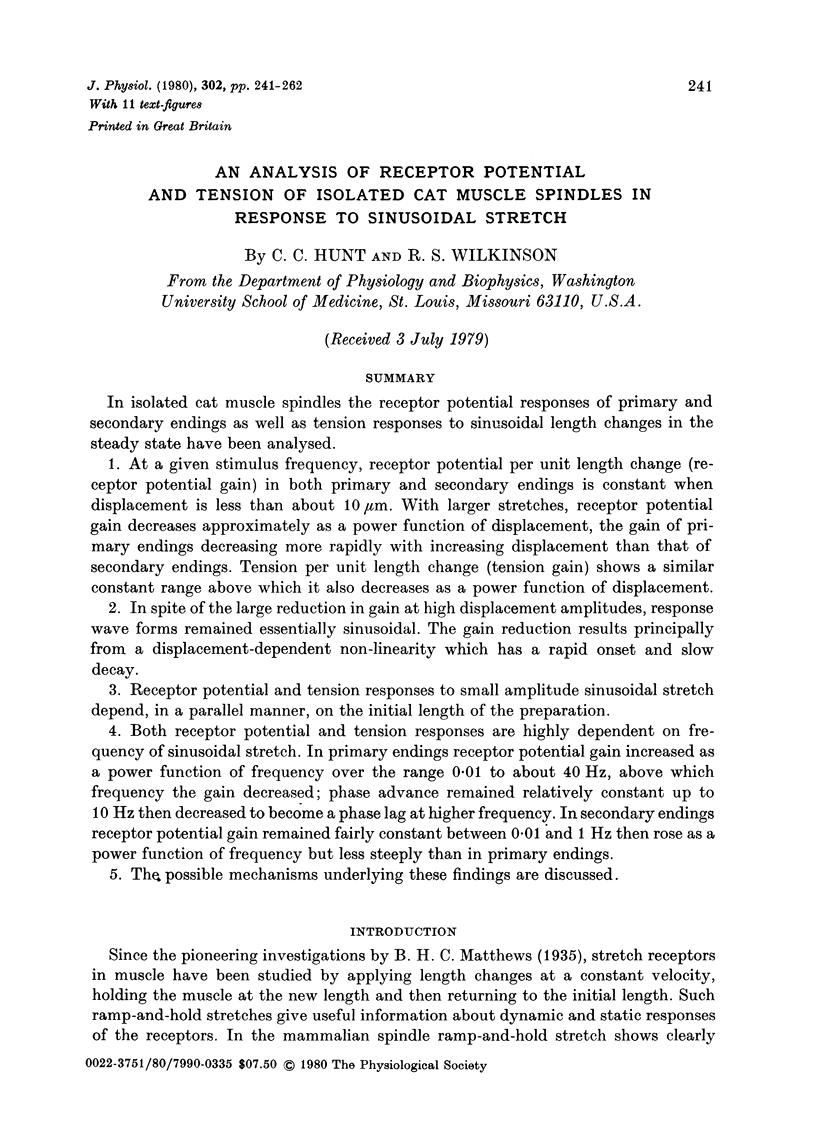
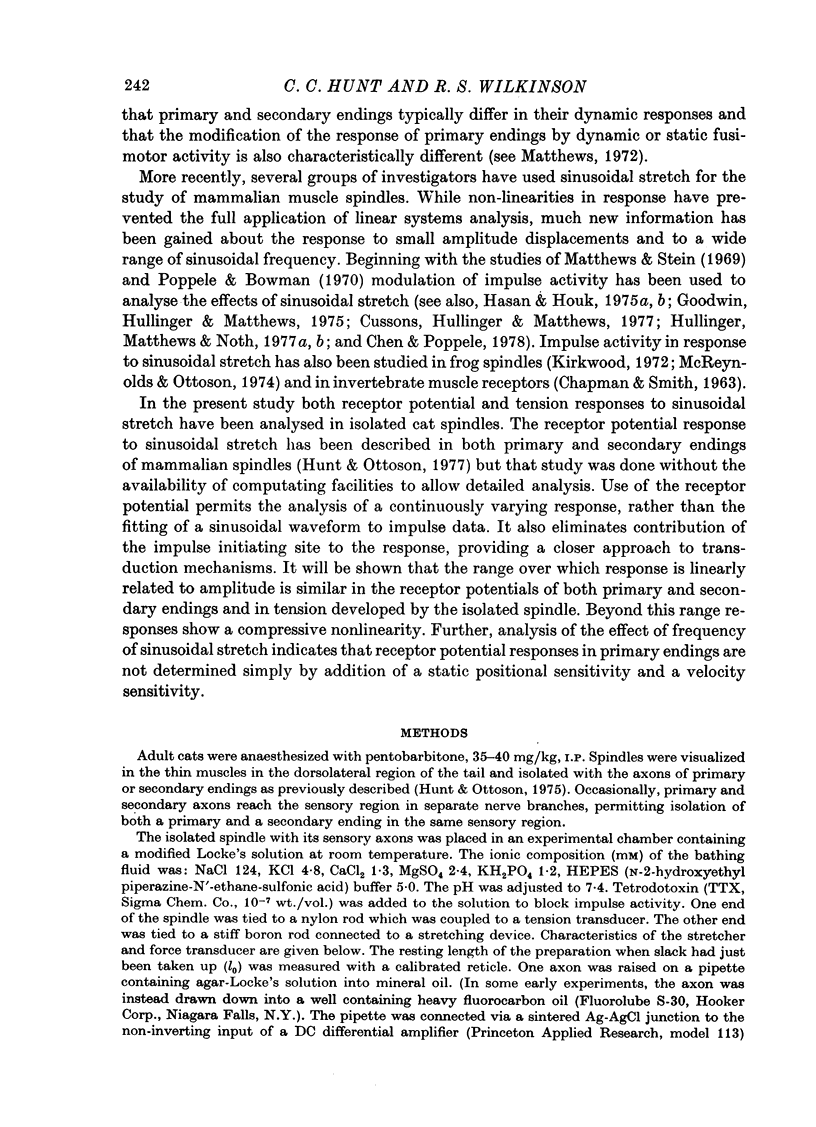
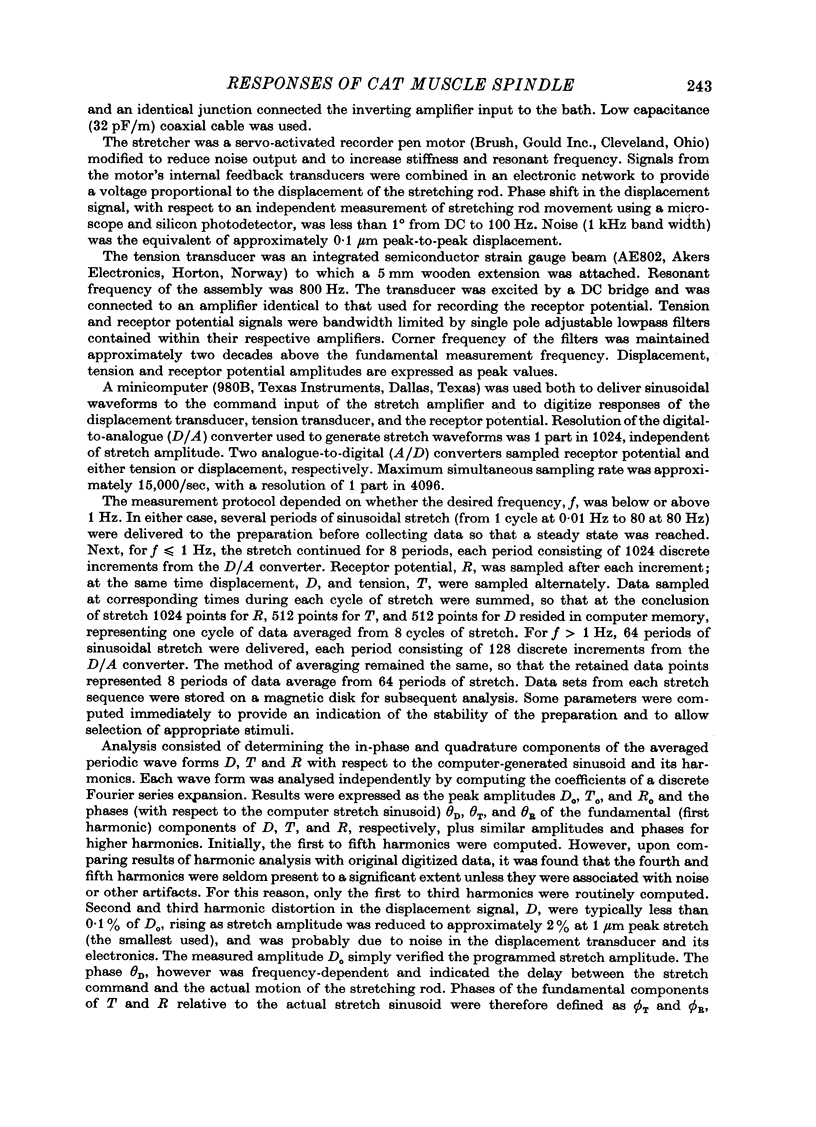
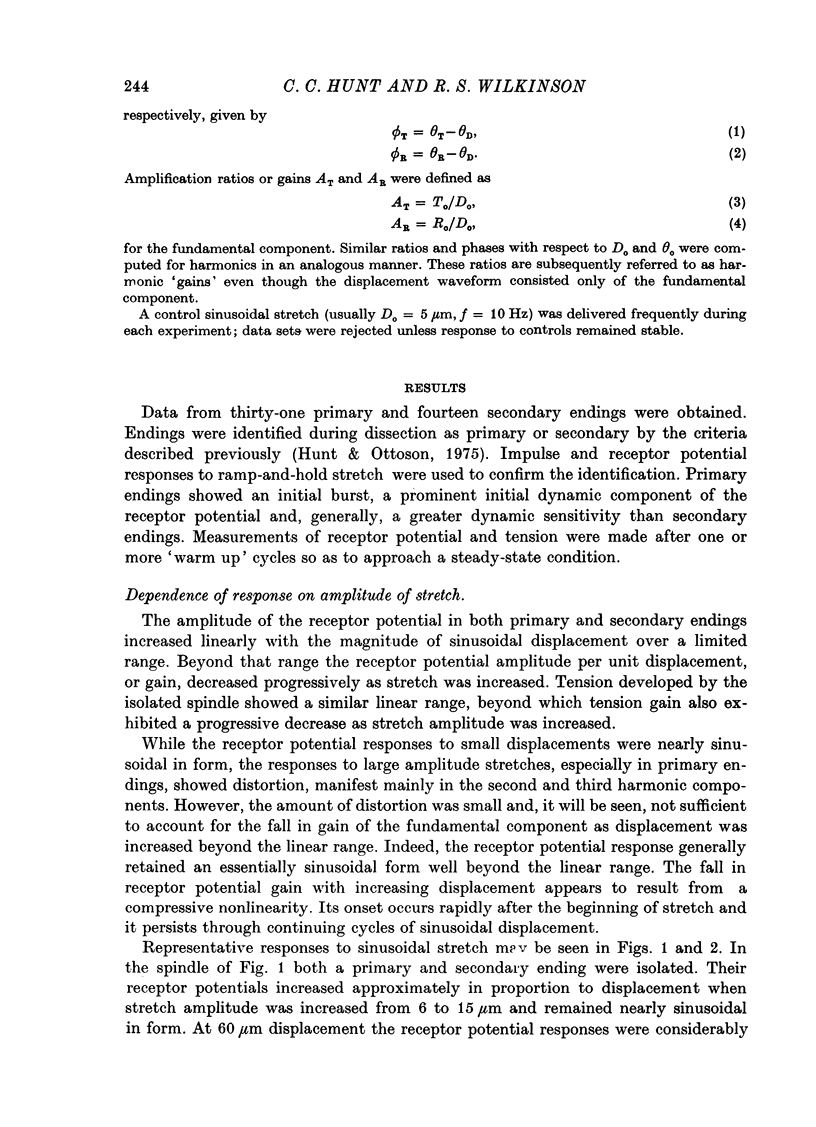
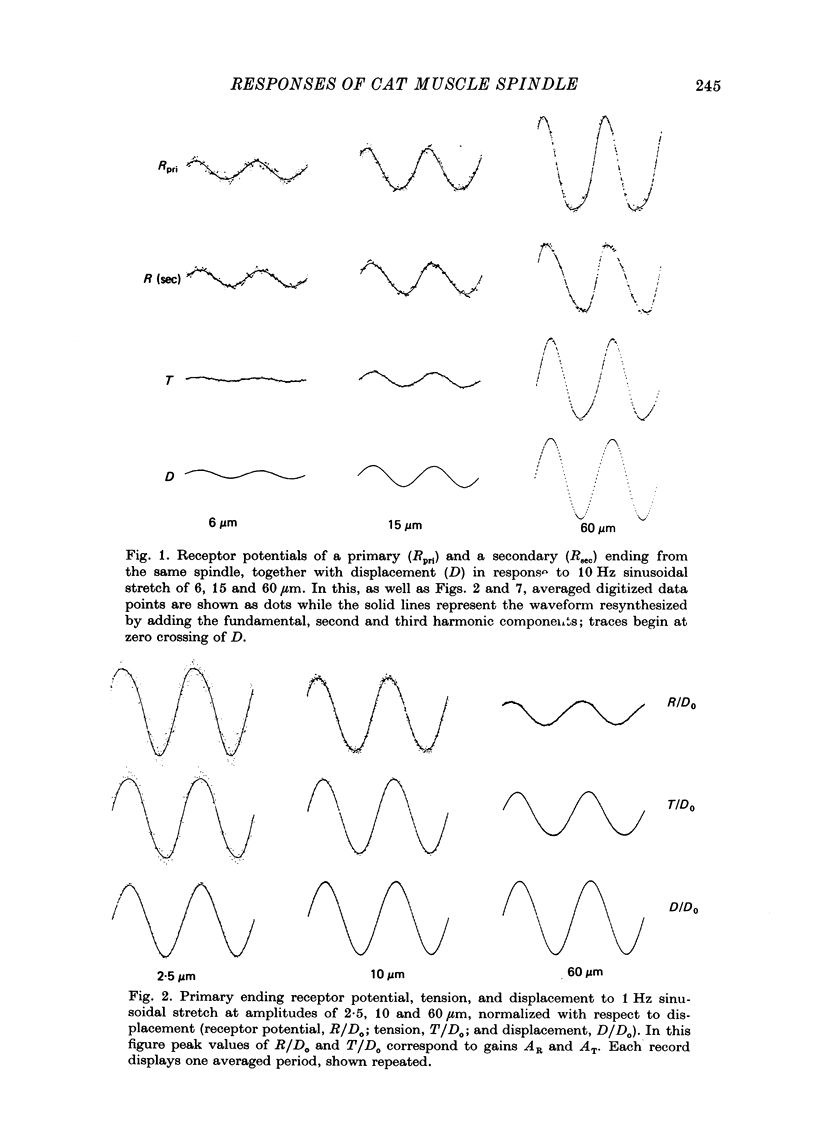
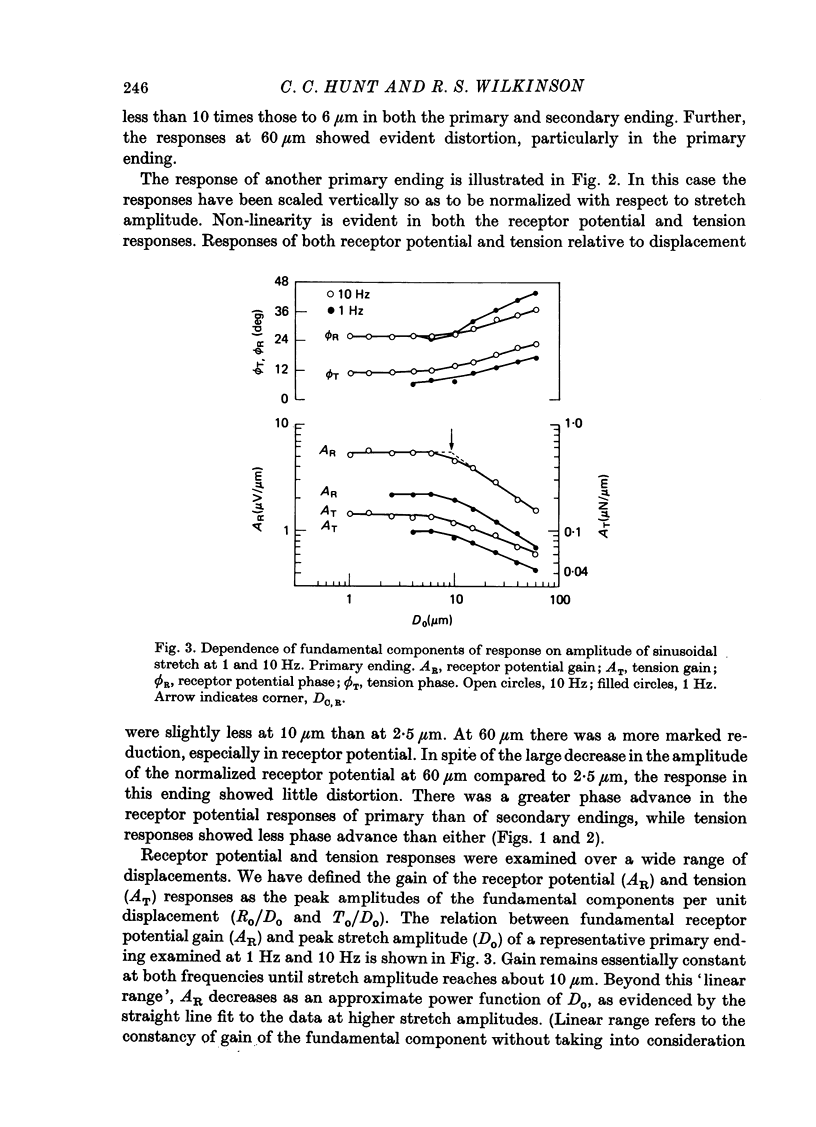
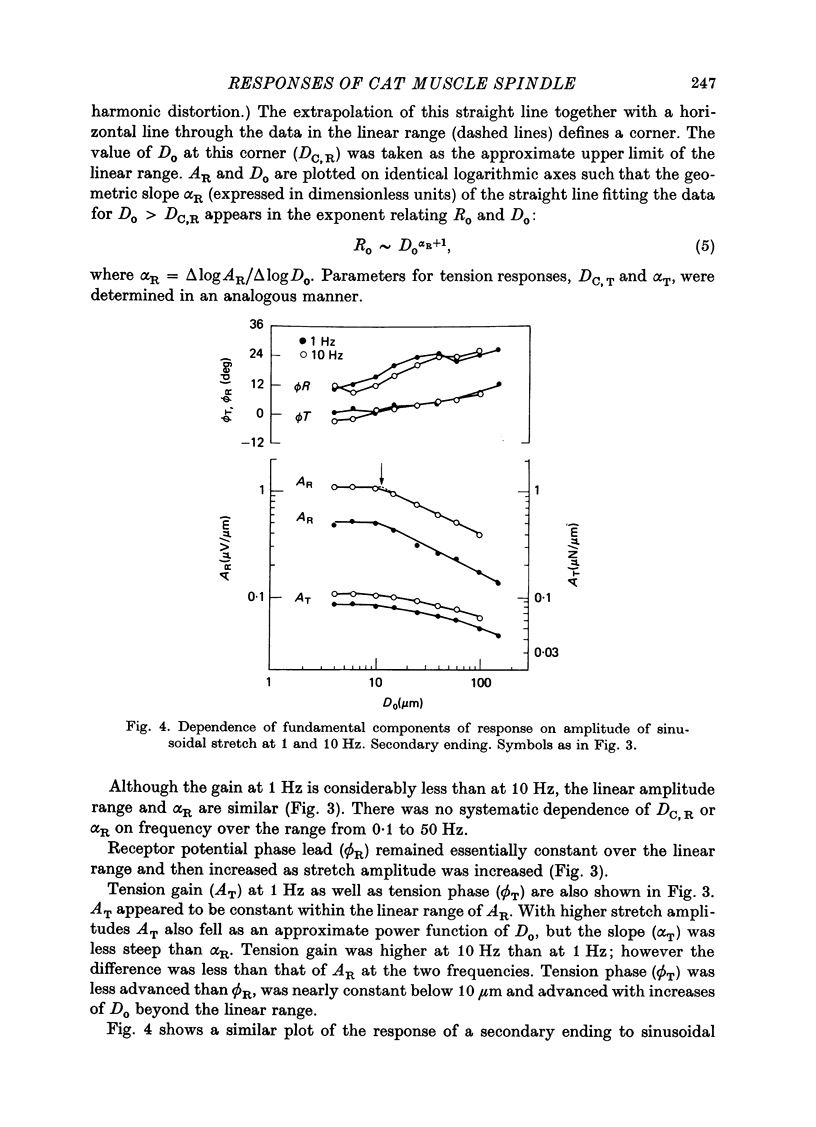
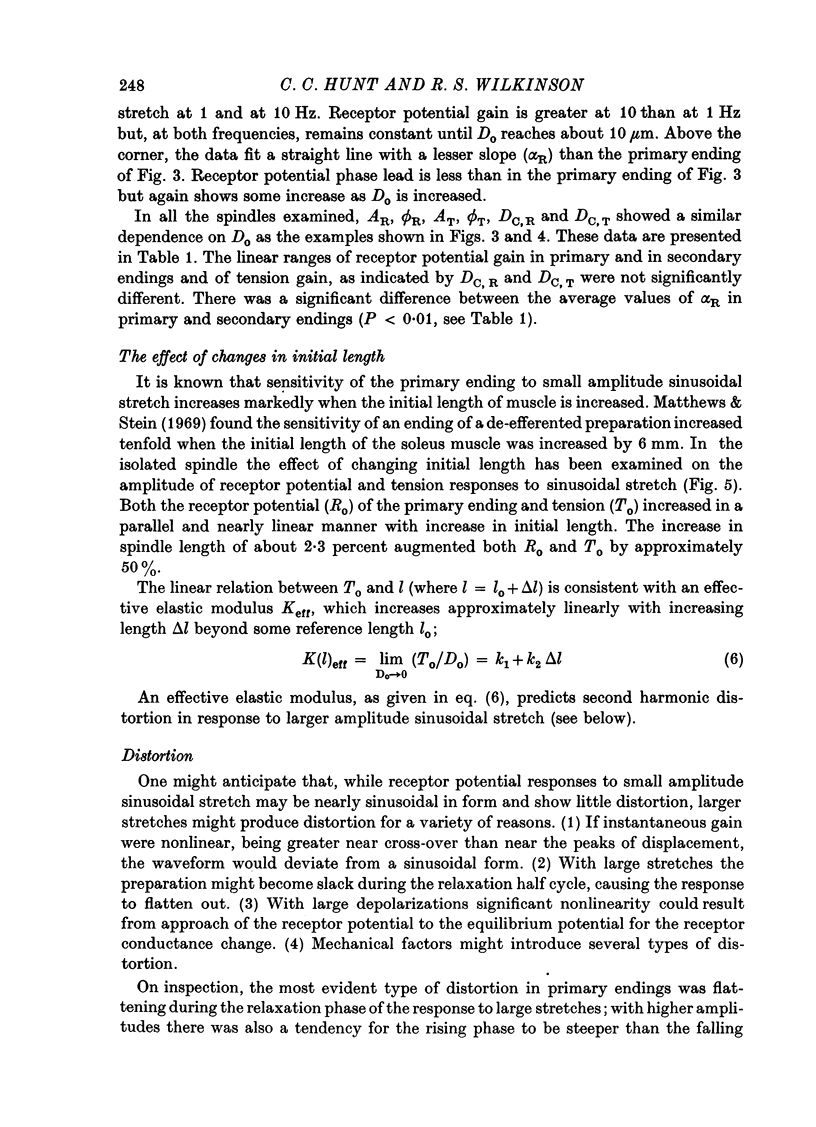
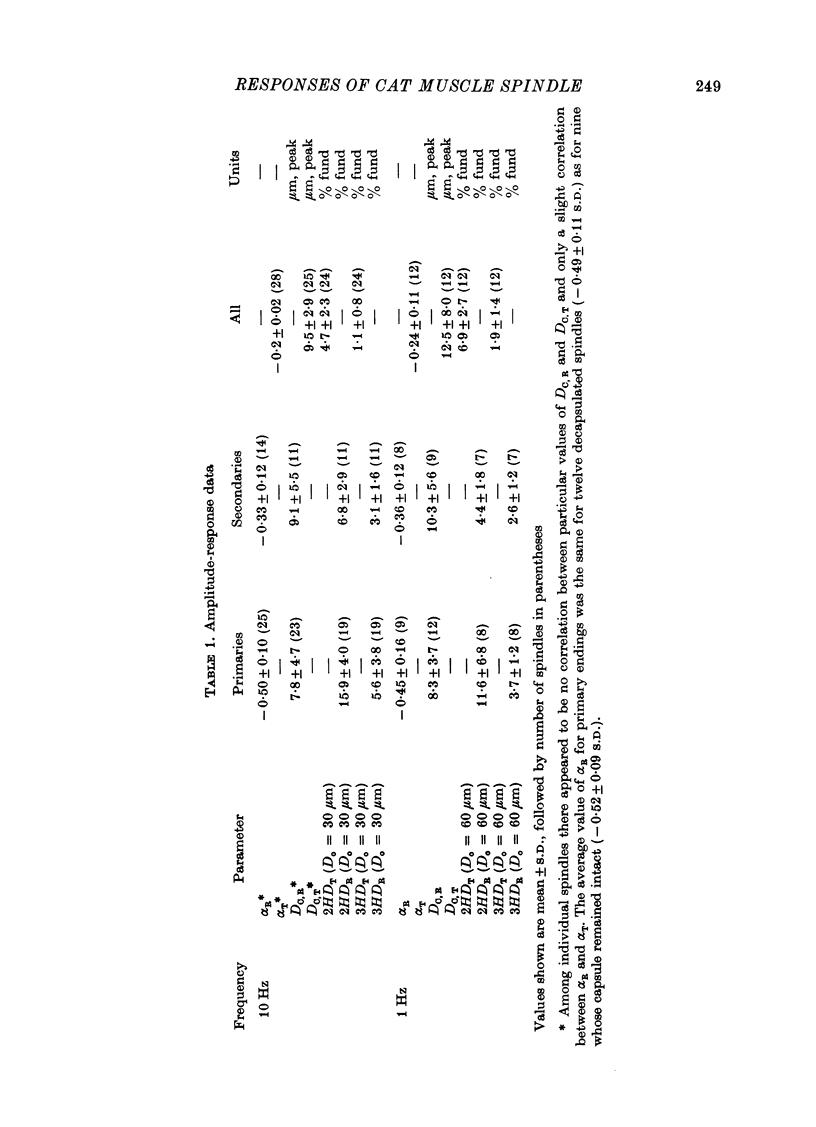
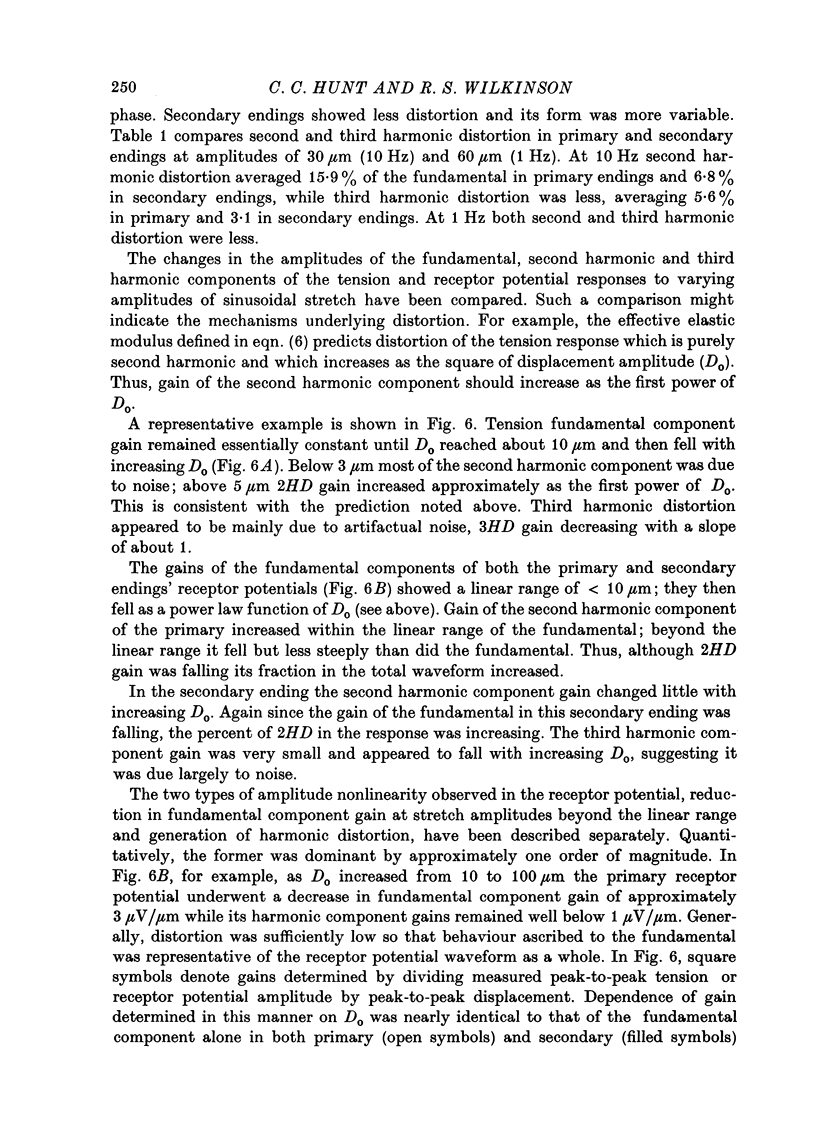
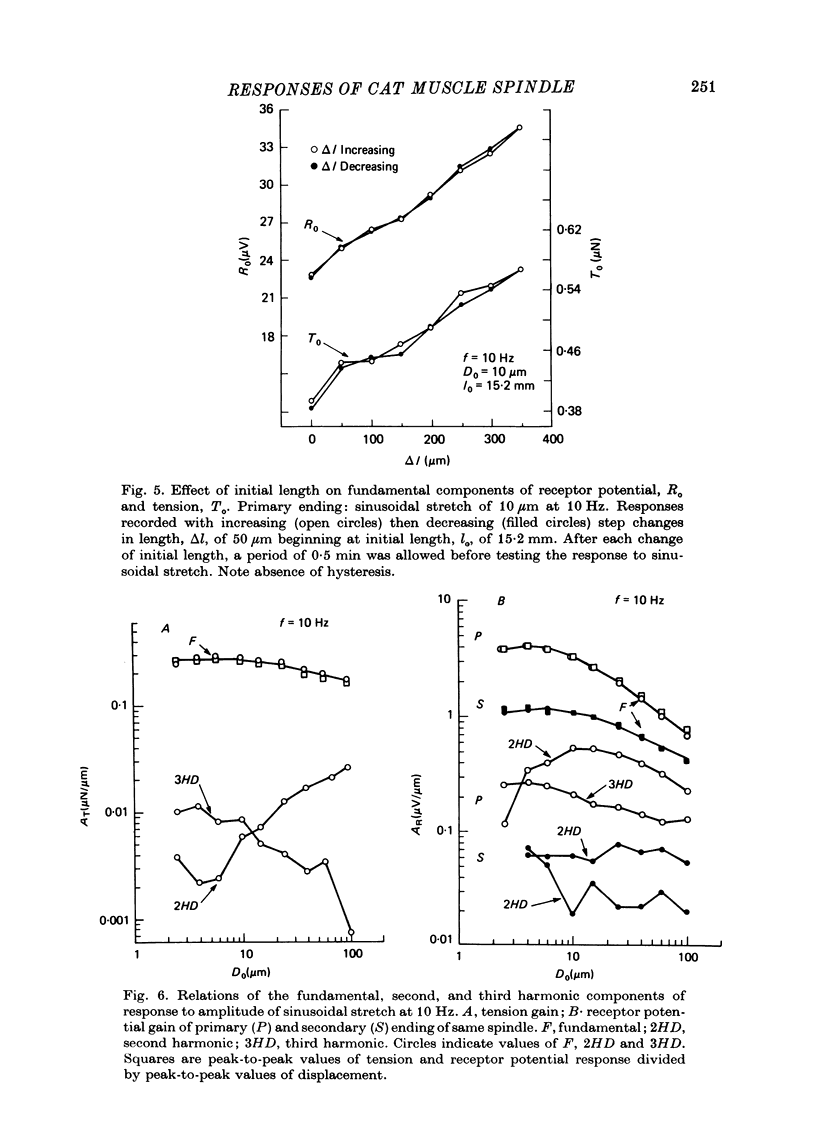

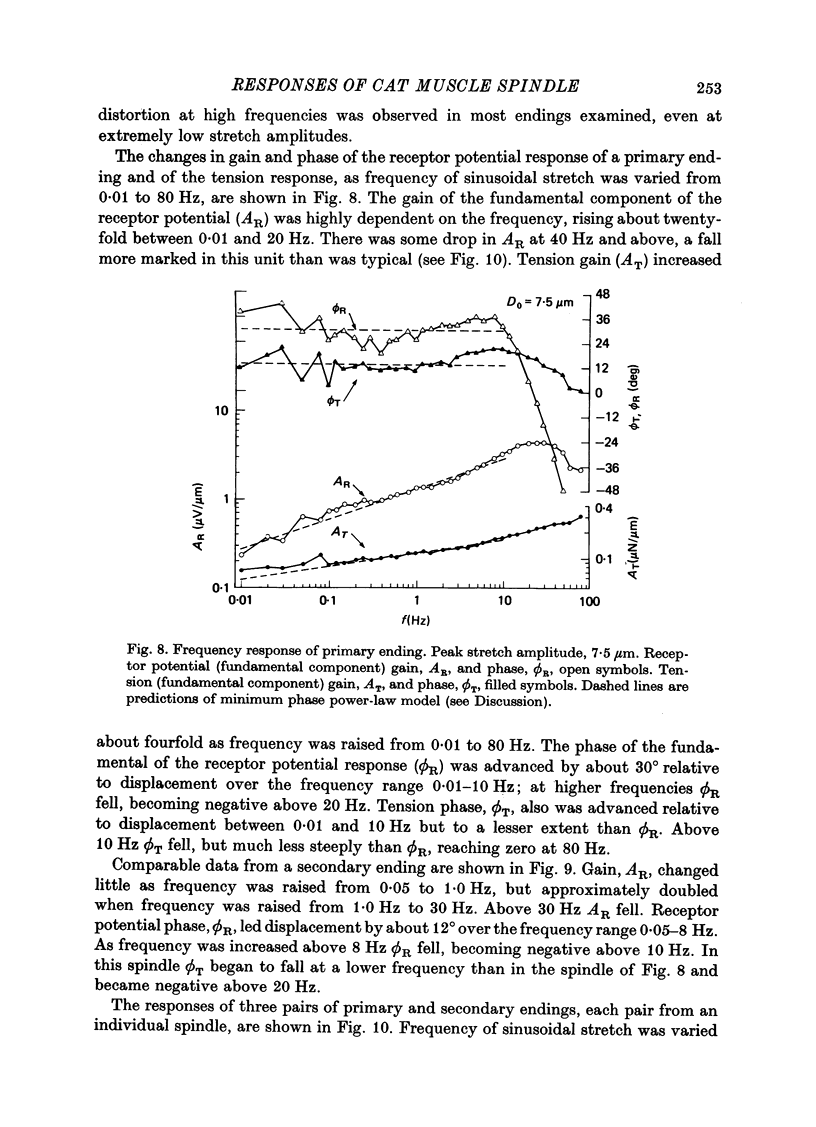
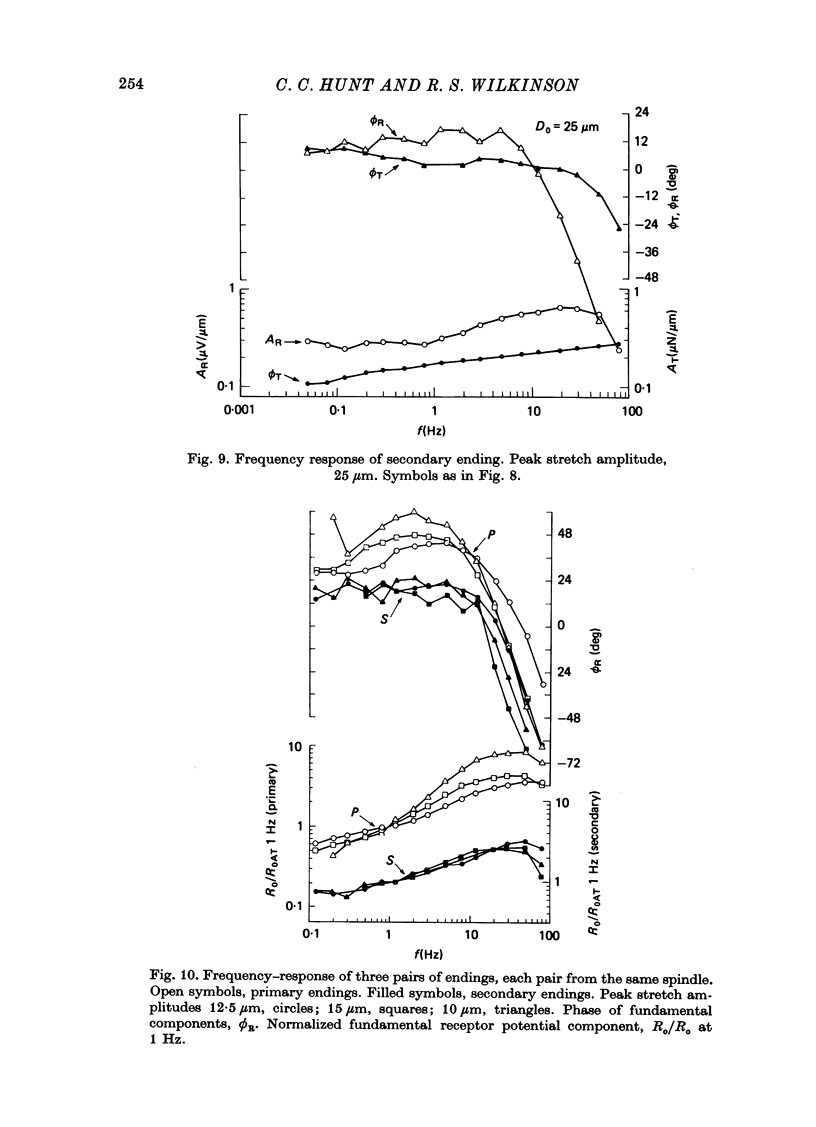
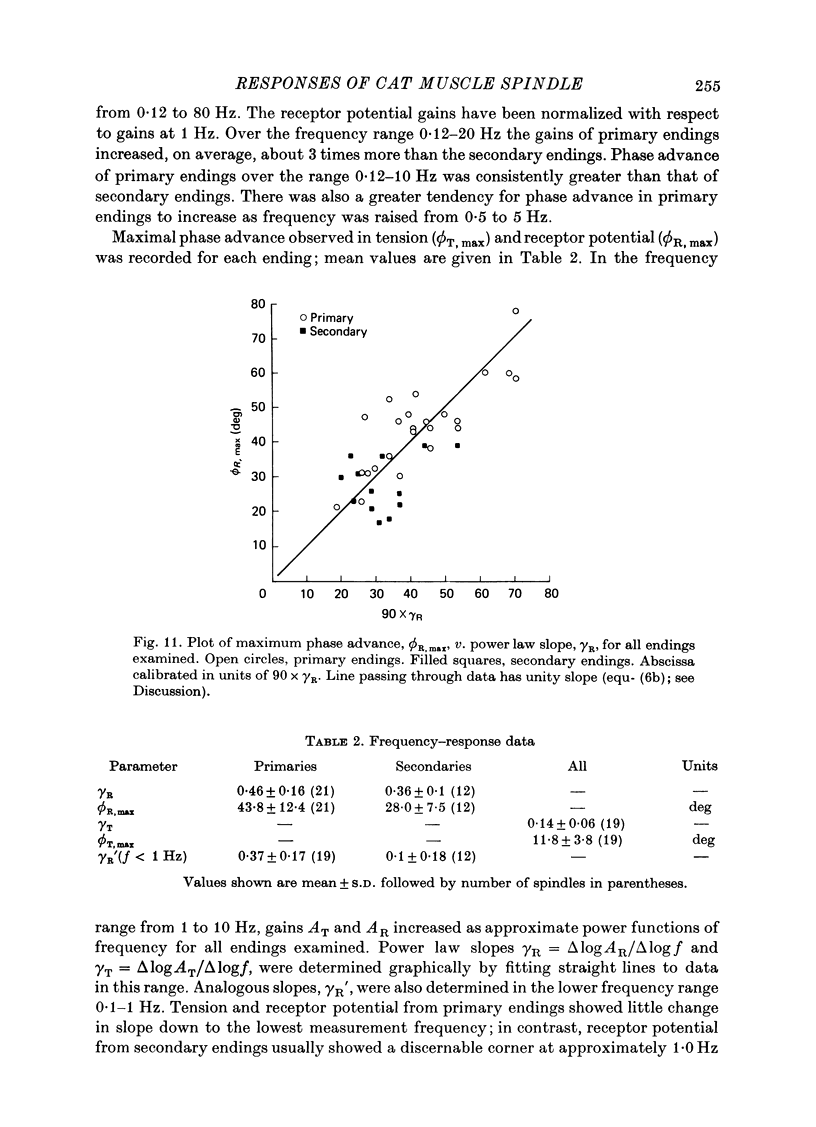
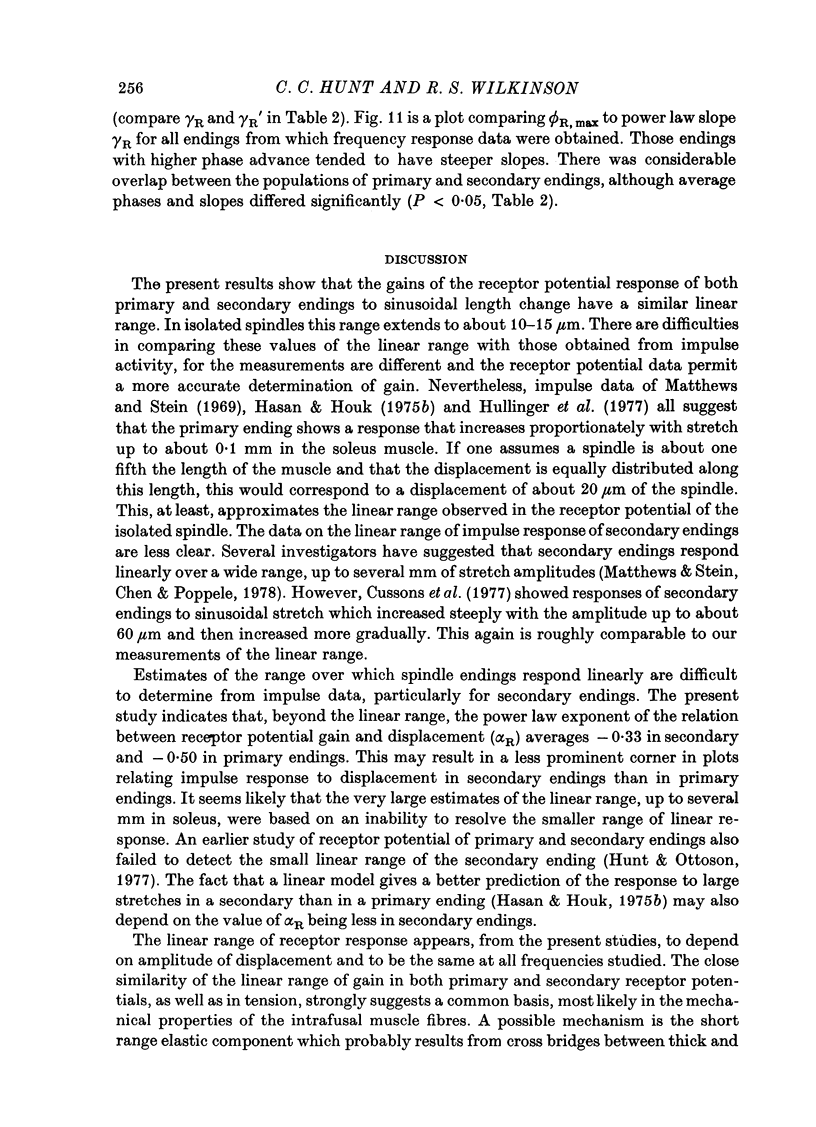
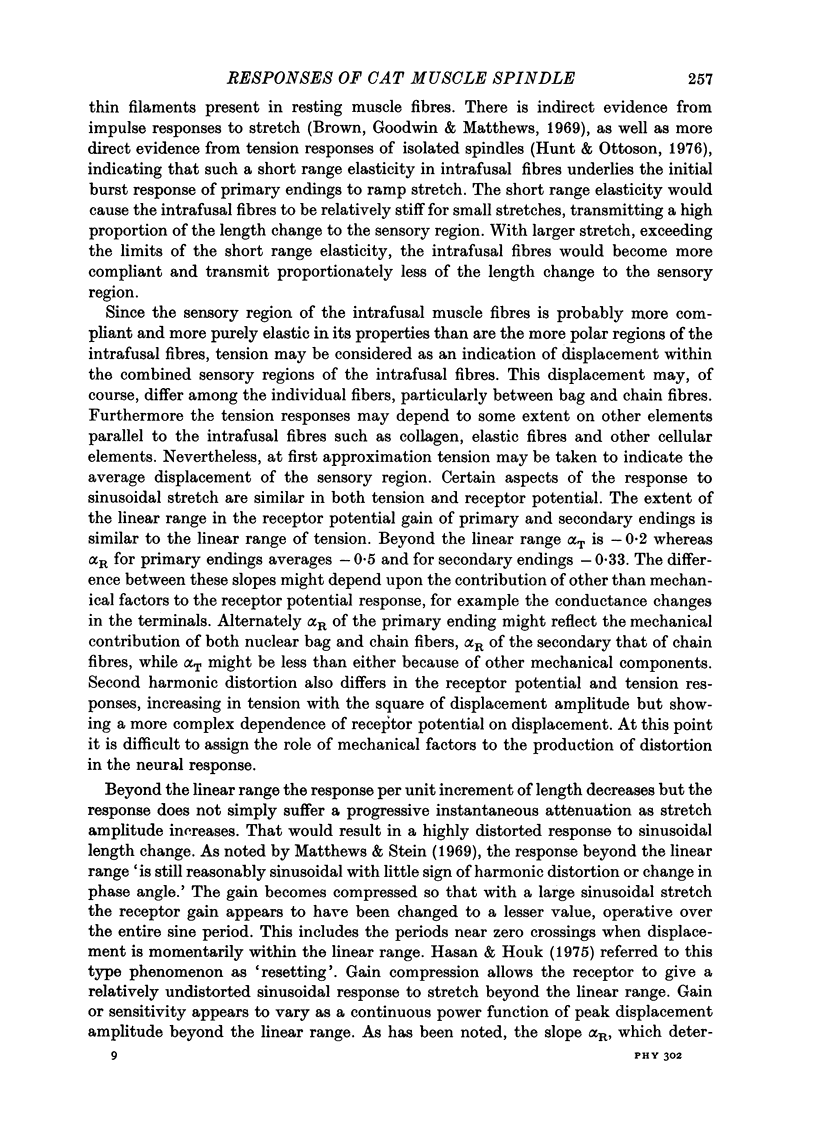
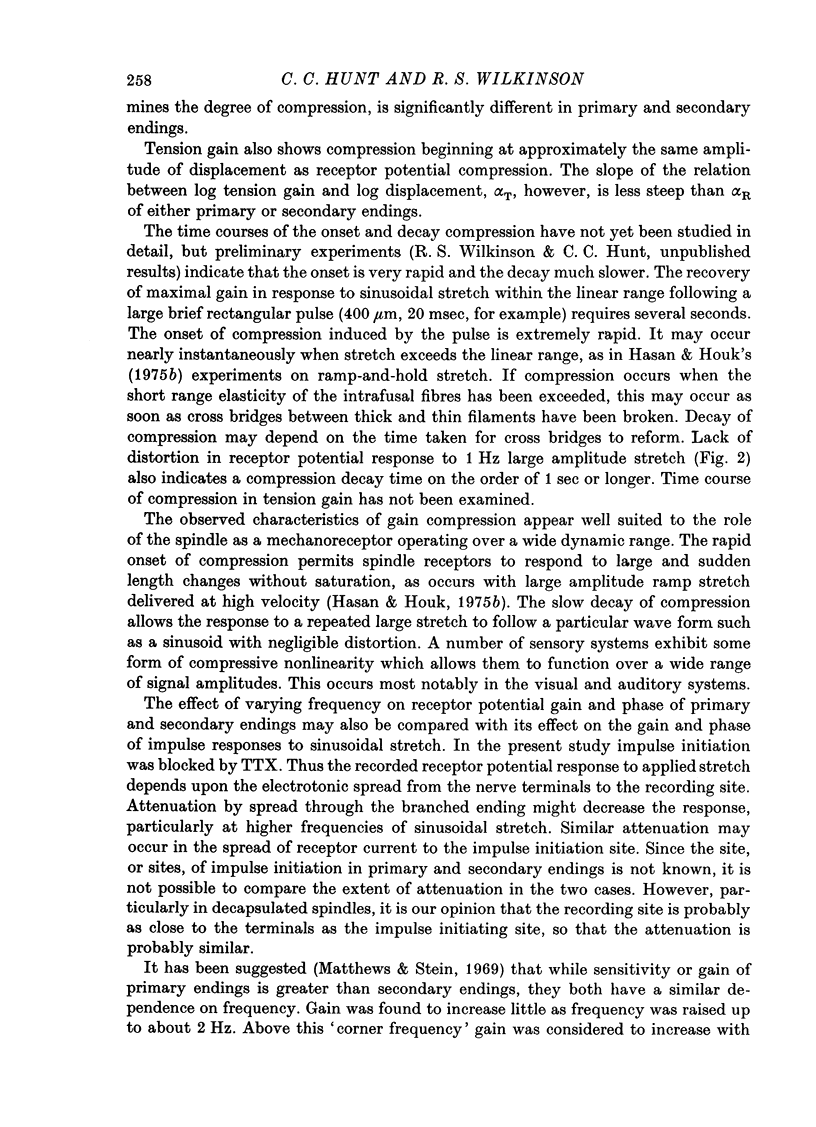
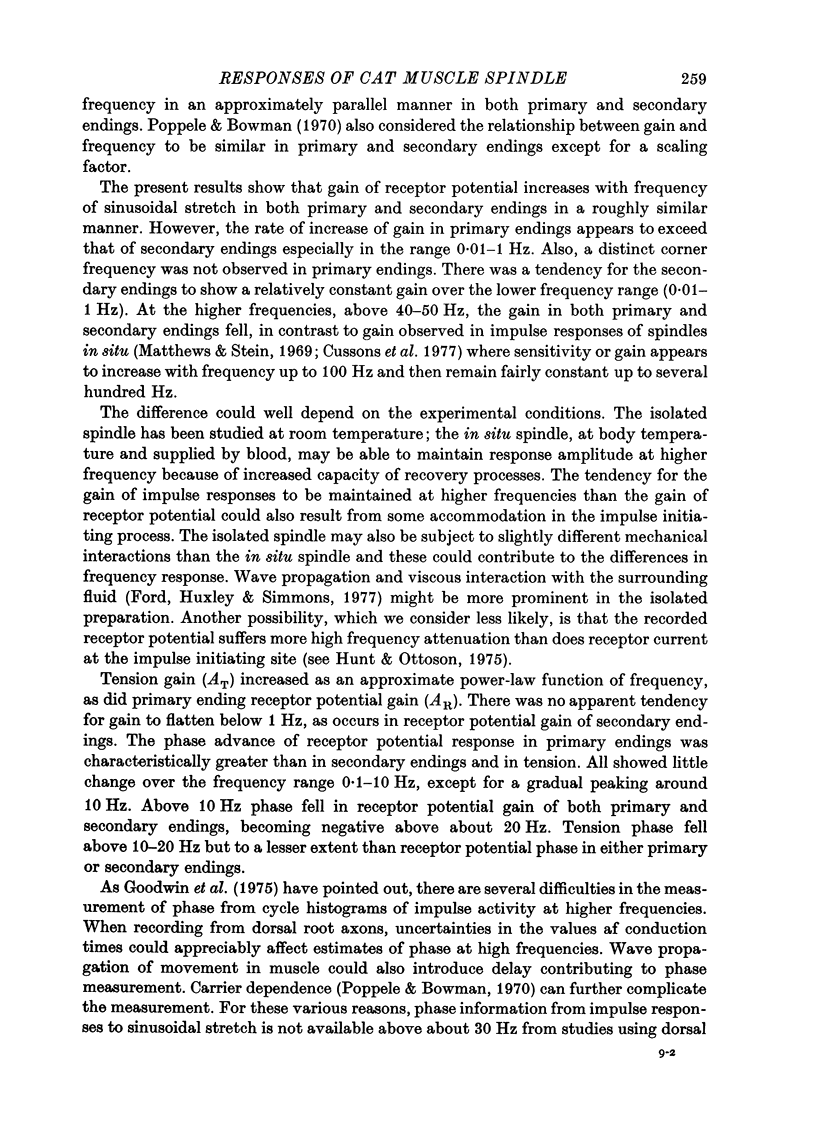
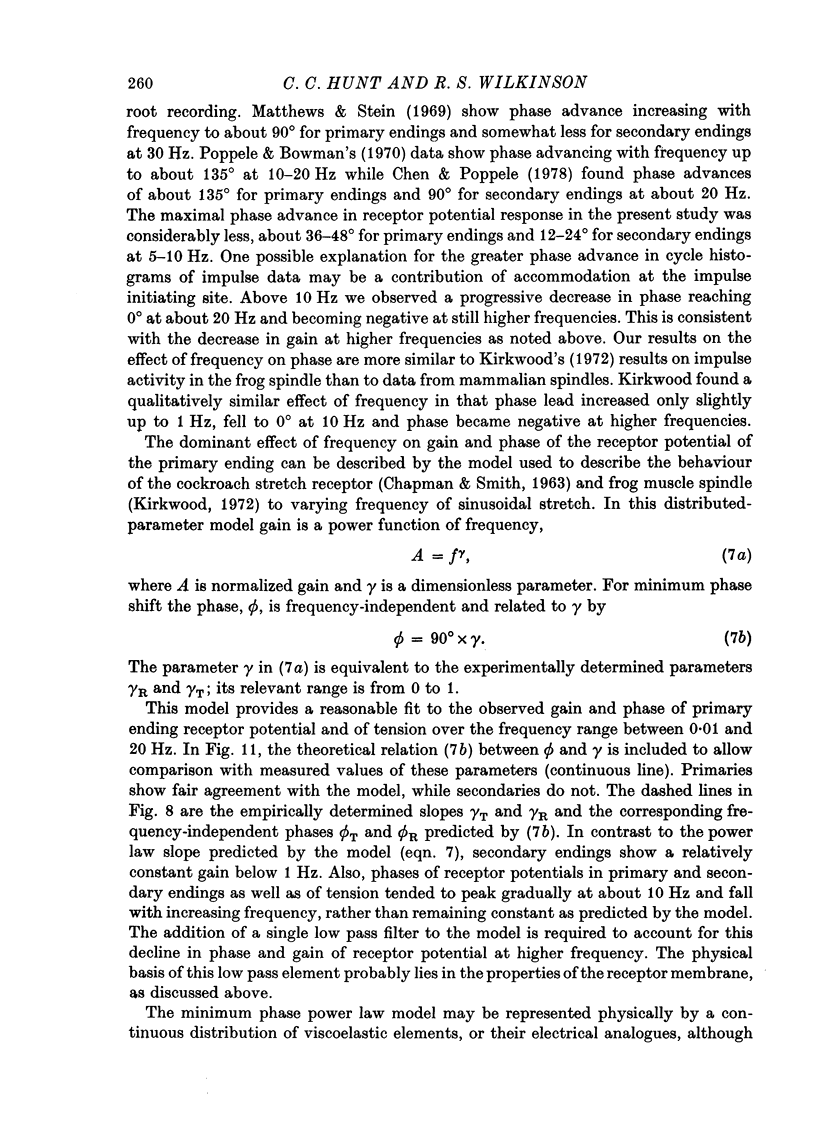
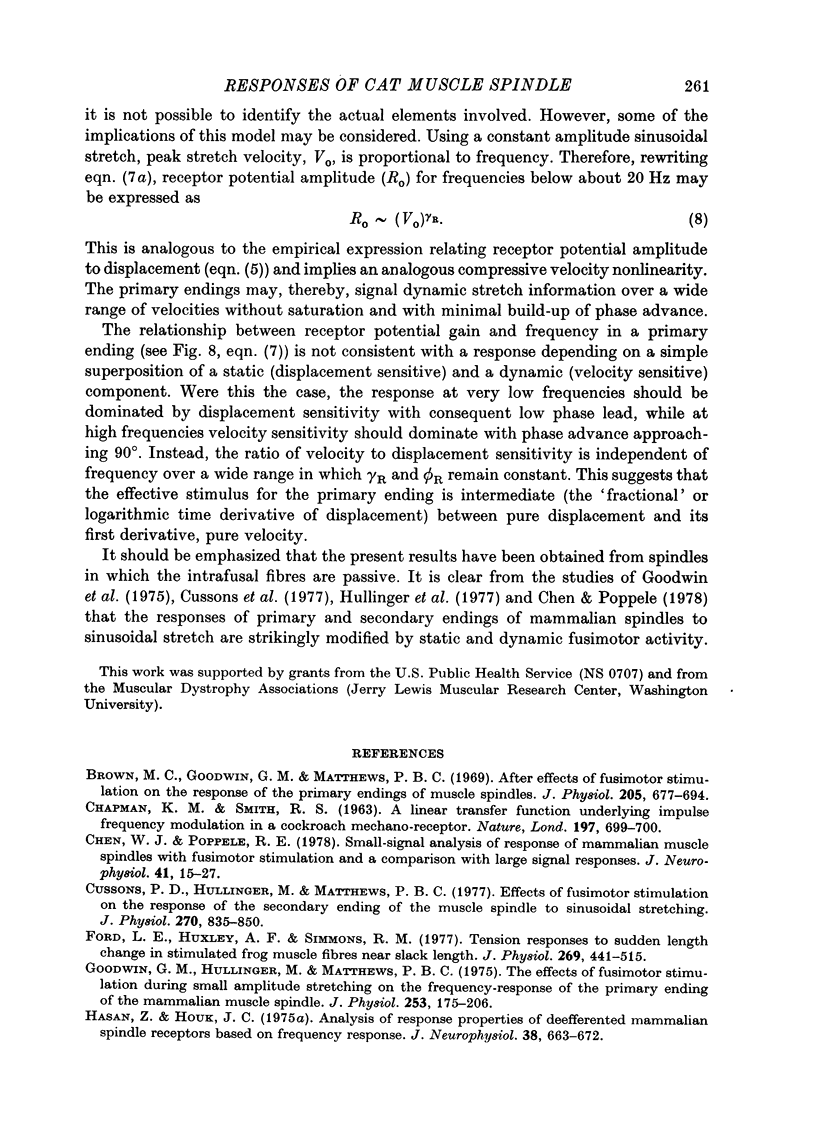
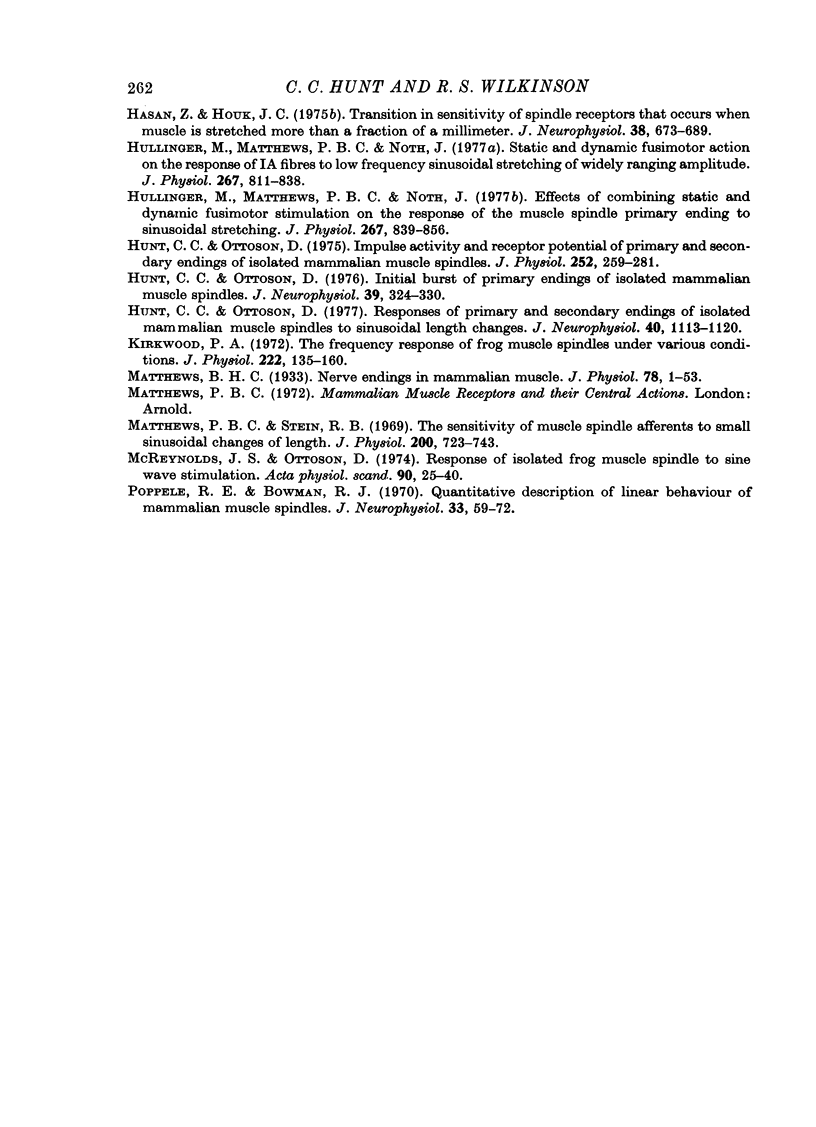
Selected References
These references are in PubMed. This may not be the complete list of references from this article.
- Brown M. C., Goodwin G. M., Matthews P. B. After-effects of fusimotor stimulation on the response of muscle spindle primary afferent endings. J Physiol. 1969 Dec;205(3):677–694. doi: 10.1113/jphysiol.1969.sp008990. [DOI] [PMC free article] [PubMed] [Google Scholar]
- Chen W. J., Poppele R. E. Small-signal analysis of response of mammalian muscle spindles with fusimotor stimulation and a comparison with large-signal responses. J Neurophysiol. 1978 Jan;41(1):15–27. doi: 10.1152/jn.1978.41.1.15. [DOI] [PubMed] [Google Scholar]
- Cussons P. D., Hulliger M., Matthews P. B. Effects of fusimotor stimulation on the response of the secondary ending of the muscle spindle to sinusoidal stretching. J Physiol. 1977 Sep;270(3):835–850. doi: 10.1113/jphysiol.1977.sp011984. [DOI] [PMC free article] [PubMed] [Google Scholar]
- Ford L. E., Huxley A. F., Simmons R. M. Tension responses to sudden length change in stimulated frog muscle fibres near slack length. J Physiol. 1977 Jul;269(2):441–515. doi: 10.1113/jphysiol.1977.sp011911. [DOI] [PMC free article] [PubMed] [Google Scholar]
- Goodwin G. M., Hulliger M., Matthews P. B. The effects of fusimotor stimulation during small amplitude stretching on the frequency-response of the primary ending of the mammalian muscle spindle. J Physiol. 1975 Dec;253(1):175–206. doi: 10.1113/jphysiol.1975.sp011186. [DOI] [PMC free article] [PubMed] [Google Scholar]
- Hasan Z., Houk J. C. Analysis of response properties of deefferented mammalian spindle receptors based on frequency response. J Neurophysiol. 1975 May;38(3):663–672. doi: 10.1152/jn.1975.38.3.663. [DOI] [PubMed] [Google Scholar]
- Hasan Z., Houk J. C. Transition in sensitivity of spindle receptors that occurs when muscle is stretched more than a fraction of a millimeter. J Neurophysiol. 1975 May;38(3):673–689. doi: 10.1152/jn.1975.38.3.673. [DOI] [PubMed] [Google Scholar]
- Hulliger M., Matthews P. B., Noth J. Effects of combining static and dynamic fusimotor stimulation on the response of the muscle spindle primary ending to sinusoidal stretching. J Physiol. 1977 Jun;267(3):839–856. doi: 10.1113/jphysiol.1977.sp011840. [DOI] [PMC free article] [PubMed] [Google Scholar]
- Hulliger M., Matthews P. B., Noth J. Static and dynamic fusimotor action on the response of Ia fibres to low frequency sinusoidal stretching of widely ranging amplitude. J Physiol. 1977 Jun;267(3):811–838. doi: 10.1113/jphysiol.1977.sp011839. [DOI] [PMC free article] [PubMed] [Google Scholar]
- Hunt C. C., Ottoson D. Impulse activity and receptor potential of primary and secondary endings of isolated mammalian muscle spindles. J Physiol. 1975 Oct;252(1):259–281. doi: 10.1113/jphysiol.1975.sp011143. [DOI] [PMC free article] [PubMed] [Google Scholar]
- Hunt C. C., Ottoson D. Initial burst of primary endings of isolated mammalian muscle spindles. J Neurophysiol. 1976 Mar;39(2):324–330. doi: 10.1152/jn.1976.39.2.324. [DOI] [PubMed] [Google Scholar]
- Hunt C. C., Ottoson D. Responses of primary and secondary endings of isolated mammalian muscle spindles to sinusoidal length changes. J Neurophysiol. 1977 Sep;40(5):1113–1120. doi: 10.1152/jn.1977.40.5.1113. [DOI] [PubMed] [Google Scholar]
- Kirkwood P. A. The frequency response of frog muscle spindles under various conditions. J Physiol. 1972 Apr;222(1):135–160. doi: 10.1113/jphysiol.1972.sp009791. [DOI] [PMC free article] [PubMed] [Google Scholar]
- Matthews B. H. Nerve endings in mammalian muscle. J Physiol. 1933 Apr 13;78(1):1–53. doi: 10.1113/jphysiol.1933.sp002984. [DOI] [PMC free article] [PubMed] [Google Scholar]
- Matthews P. B., Stein R. B. The sensitivity of muscle spindle afferents to small sinusoidal changes of length. J Physiol. 1969 Feb;200(3):723–743. doi: 10.1113/jphysiol.1969.sp008719. [DOI] [PMC free article] [PubMed] [Google Scholar]
- McReynolds J. S., Ottoson D. Response of isolated frog muscle spindle to sine wave stimulation. Acta Physiol Scand. 1974 Jan;90(1):25–40. doi: 10.1111/j.1748-1716.1974.tb05559.x. [DOI] [PubMed] [Google Scholar]
- Poppele R. E., Bowman R. J. Quantitative description of linear behavior of mammalian muscle spindles. J Neurophysiol. 1970 Jan;33(1):59–72. doi: 10.1152/jn.1970.33.1.59. [DOI] [PubMed] [Google Scholar]


